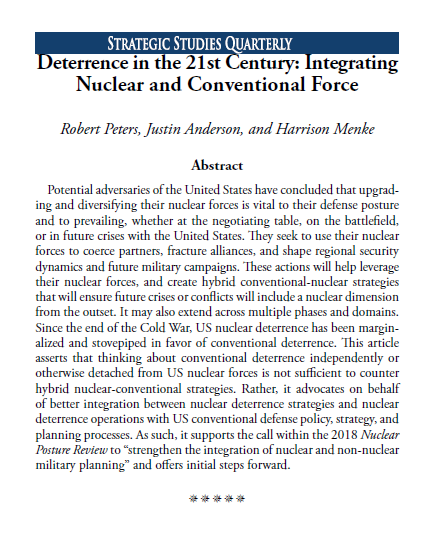 Deterrence in the 21st Century
Deterrence in the 21st Century
Potential adversaries of the United States have concluded that upgrading and diversifying their nuclear forces is vital to their defense posture and to prevailing, whether at the negotiating table, on the battlefield, or in future crises with the United States. They seek to use their nuclear forces to coerce partners, fracture alliances, and shape regional security dynamics and future military campaigns. These actions will help leverage their nuclear forces, and create hybrid conventional-nuclear strategies that will ensure future crises or conflicts will include a nuclear dimension from the outset. It may also extend across multiple phases and domains. Since the end of the Cold War, US nuclear deterrence has been marginalized and stovepiped in favor of conventional deterrence. This article asserts that thinking about conventional deterrence independently or otherwise detached from US nuclear forces is not sufficient to counter hybrid nuclear-conventional strategies. Rather, it advocates on behalf of better integration between nuclear deterrence strategies and nuclear deterrence operations with US conventional defense policy, strategy, and planning processes. As such, it supports the call within the 2018 Nuclear Posture Review to “strengthen the integration of nuclear and non-nuclear military planning” and offers initial steps forward. READ MORE>>>